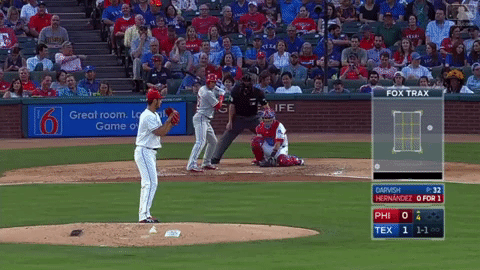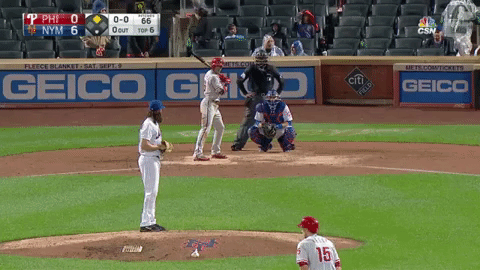Cesar Hernandez Swings Less, Hits More
Getting talked up as a second baseman can be hard. Jose Altuve, Brian Dozier, Daniel Murphy, and Jonathan Schoop occupy a lot of that conversation. Other, older guys like Robinson Cano and Ian Kinsler are still kicking around. Whit Merrifield says hello from Nowhere, too. And then there’s Cesar Hernandez, who seems to get talked up most for how underrated he is.
He’s one of only two holdovers on the Phillies since he came up in 2013 — the other is Luis Garcia — so even after this offseason of the team shedding some of that sluggish rebuild weight and adding some bona fide muscle, they must see something in him. He’s not just an asset to turn. This is true even after signing Scott Kingery, whose primary position is the same as Hernandez’s, to a six-year extension before he’s even played a single game in the Majors.
Hernandez is remarkably consistent. He strikes out less than 20% of the time, walks more than 10%, will display occasional pop, and can handle the glove at the keystone. But even consistency needs to evolve sometimes in order to keep pace, and we may have seen the next step from Cesar Hernandez last year.

The change, in a word: discipline. Per Pitch Info, we can see how Hernandez apparently decided to just stop chasing pitches out of the zone. In the first half, he ranked 29th in MLB, directly ahead of Edwin Encarnacion, and fourth at his position. That’s already pretty good. But in the second half, he shot up to eighth in MLB and tied with now-teammate Carlos Santana, and second at his position.
It’s one thing to see a relatively sharp change in a stat and be able to acknowledge how a player’s performance improved or declined. It’s another to process how directly it possibly influenced his overall production. Consider that Hernandez swung at 5.2% less pitches in the second half. Nearly 80% of that decrease was the direct result of letting pitches outside the zone go. That’s four balls for every called strike.
The difference in Hernandez’s approach fueled a drastic increase in OBP and was a big reason he became 25% better than league average at creating runs. It’s no wonder he went from being worth less than a win before the All-Star break to 2.4 after it.
Check out the gifs below. They’re both of the switch-hitting Hernandez swinging from the left side at a pitch to the same outside third of the plate:


The first is against a Yu Darvish fastball in May and resulted in a weak groundout to Elvis Andrus. It has a nice Fox Trax spot to show you how it was out of the zone. The second is against a Robert Gsellman fastball in September, around the same outside third of the plate, and was a double. This one doesn’t have a tracker showing you it was more over the plate, but, per Statcast, it was.
If you’ve heard of pitchers working the plate side to side, Hernandez does a little bit of the same with his swing, working horizontally. He pulls out his hips behind him and lets his bat drive through the zone on a similar plane. The small difference in pitch selection between the two gifs was the difference between a dribbler and an extra-base hit, and Hernandez made this a regular thing from mid-July and on.
It appears as though he didn’t make any mechanical change that allowed him to better cover the plate or access the ball when it got there. This is true whether he batted lefthanded or righthanded. His plate discipline, then, really does seem to be the result of simply choosing to swing at only what’s within the zone. Last August, I wrote about Rhys Hoskins being exciting in the context of the current Phillies, and how he offers a threat that the rest of the lineup doesn’t. If Hernandez’s plate discipline sticks in 2018 — the handful of games so far hasn’t allowed for a stable sample size yet — then he, too, will offer a skill that makes the lineup tougher and more of a threat.
It’s been a weird year for the Phillies already. Between Gabe Kapler and younger talent making a push for playing time, it could get much weirder. But an eye like Cesar Hernandez’s at the plate every day could help steady the ship.
—
Pitch Info Data from FanGraphs. Gifs made with Giphy.
Tim Jackson is a writer and educator who loves pitching duels. Find him and all his baseball thoughts online at timjacksonwrites.com/baseball and @TimCertain.